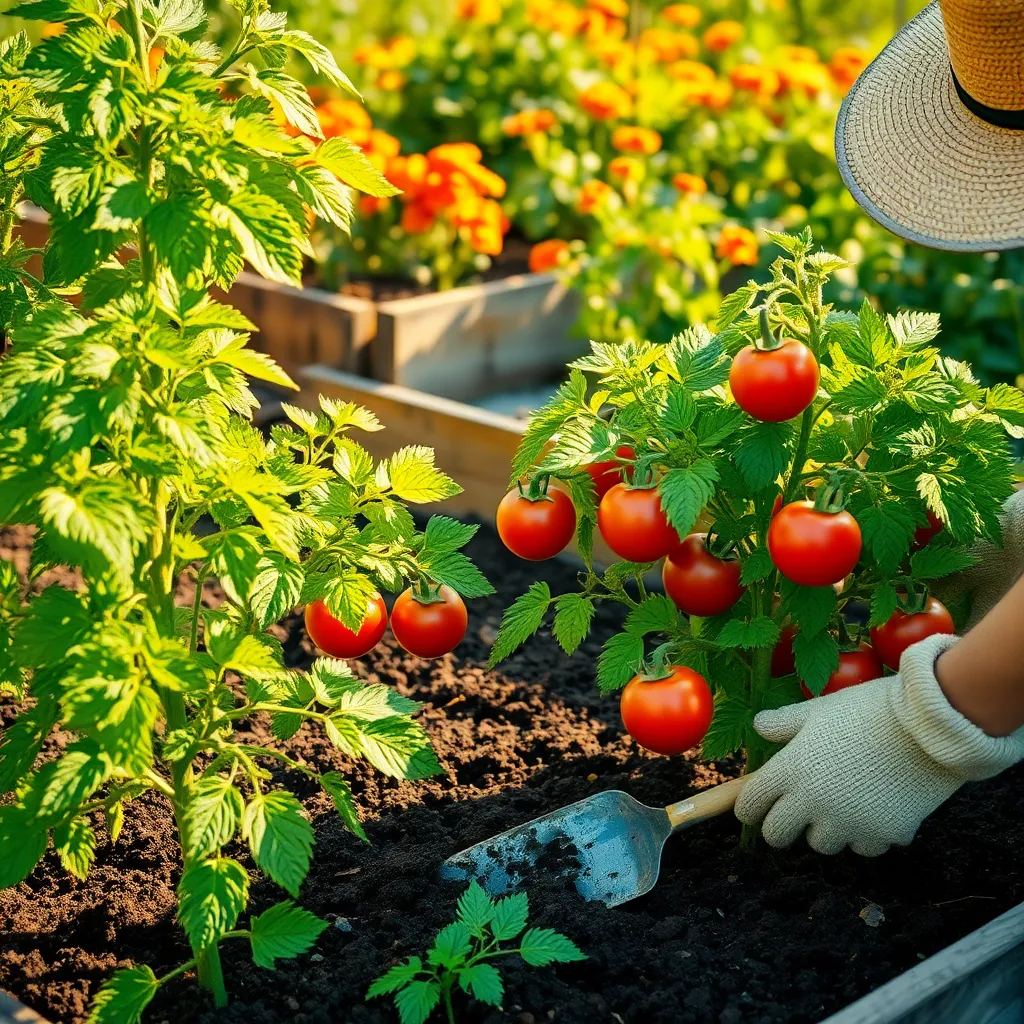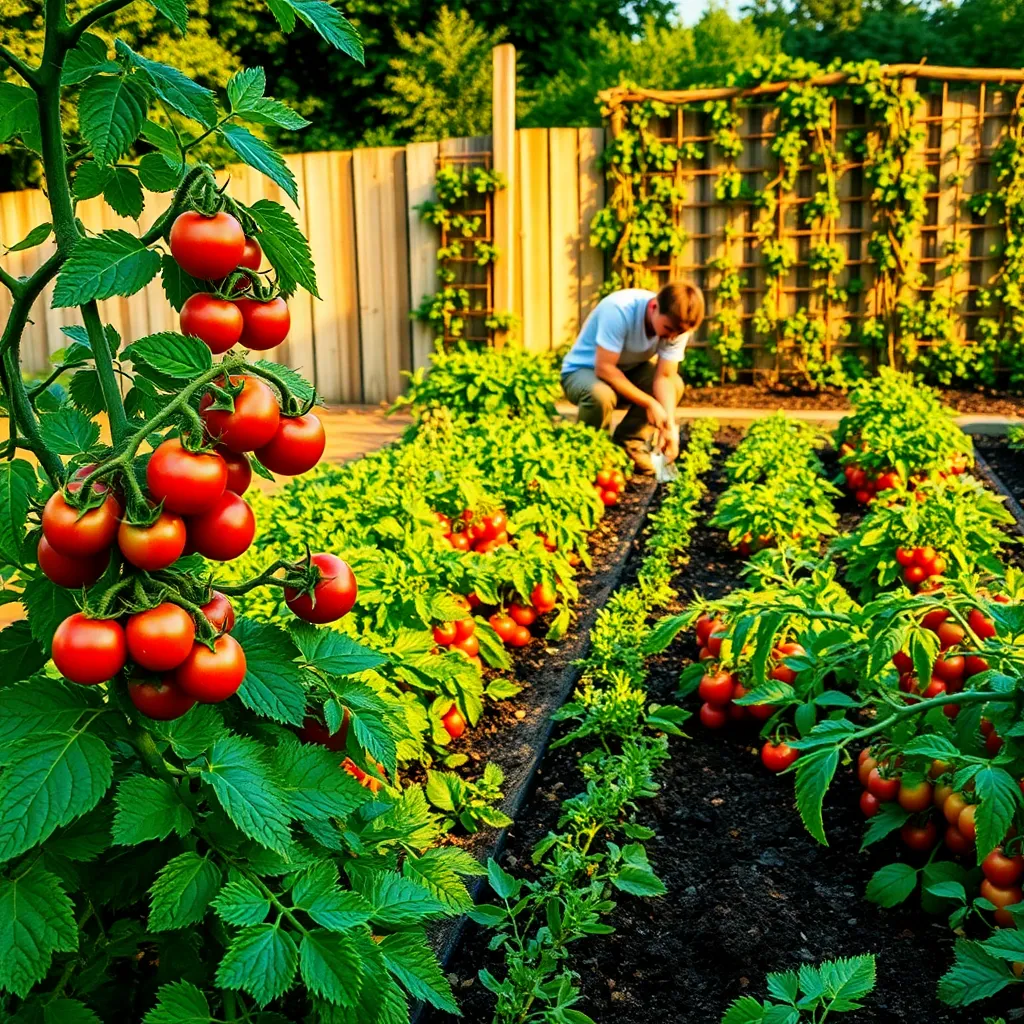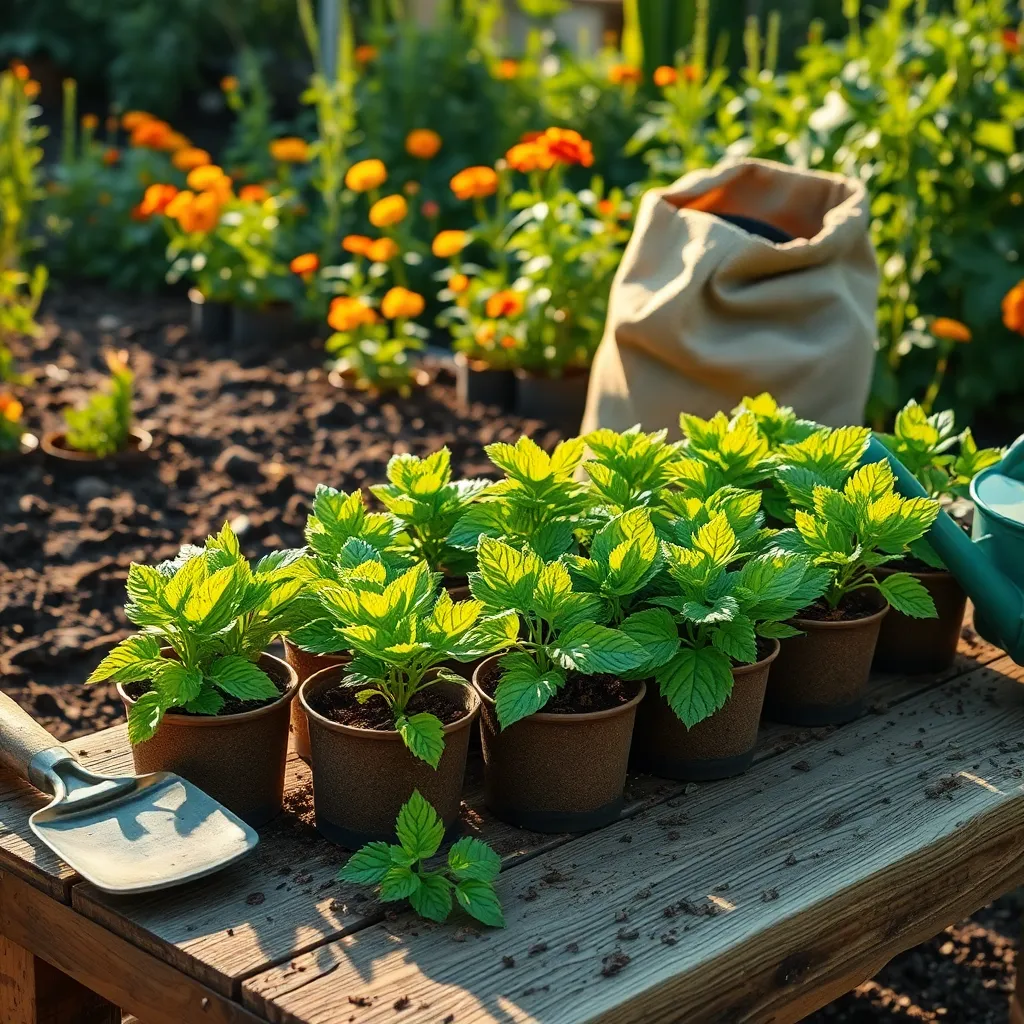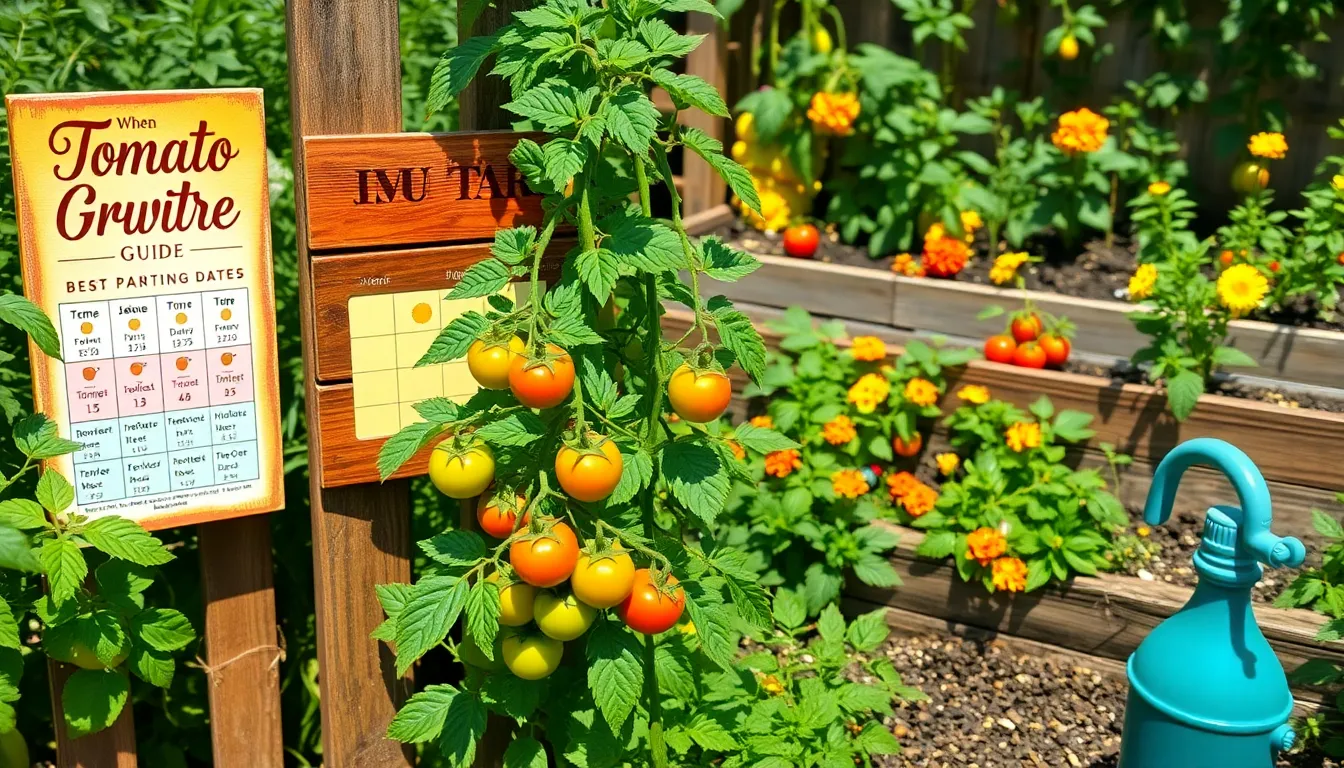For many gardeners, both new and seasoned, the prospect of growing tomatoes is as exciting as it is rewarding. The journey from seed to ripe, juicy fruit is a quintessential part of the gardening experience, offering not just a feast for the senses but also a tangible connection to the cycles of nature. Understanding when to grow tomatoes is crucial, as timing can be the difference between a bountiful harvest and a disappointing crop. With a few key insights, you can set your tomato plants up for success, turning your garden into a veritable paradise.
In this article, we’ll guide you through the essential timing considerations for growing tomatoes, ensuring you know precisely when to start planting. You’ll learn about the factors that influence the ideal planting time, such as climate, local frost dates, and tomato variety. Whether you’re cultivating your first tomato patch or refining your technique, this guide aims to equip you with the knowledge you need to get the timing just right. By the end, you’ll be ready to embark on your tomato-growing journey with confidence and anticipation.
Moreover, this article will offer practical advice tailored to different gardening zones, helping you navigate specific regional challenges. We’ll also touch on the nuances of indoor versus outdoor planting to provide a comprehensive overview. Our goal is to demystify the process, making it achievable for every gardener regardless of experience level. So, prepare to dig in and discover the optimal moments to plant, nurture, and eventually savor the fruits of your labor.
Understanding Tomato Growth Cycles

Tomatoes thrive when their growth cycle is well understood and managed. Starting with seeds, it’s crucial to plant them indoors about six to eight weeks before the last expected frost date in your area.
Once seedlings have developed their first set of true leaves, they are ready for a larger pot to encourage root growth. Transplanting seedlings into individual containers ensures they have enough space to develop strong roots before moving outdoors.
When moving tomatoes outdoors, wait until nighttime temperatures consistently stay above 50°F (10°C). Gradually harden them off by exposing them to outdoor conditions for a few hours each day over a week.
Tomatoes need full sun, so select a location that receives at least six to eight hours of direct sunlight daily. Prepare the soil by mixing in plenty of organic matter, such as compost, which improves drainage and provides nutrients.
Watering tomatoes deeply and consistently is key to preventing blossom end rot. Aim to provide about 1 to 1.5 inches of water per week, adjusting for rainfall and ensuring the soil remains consistently moist but not waterlogged.
For optimal growth, consider using stakes, cages, or trellises to support the plants as they grow. Supporting tomato plants not only keeps the fruit off the ground but also increases air circulation, reducing the risk of fungal diseases.
Ideal Planting Seasons for Tomatoes

Tomatoes thrive when planted at the right time, ensuring they receive the optimal conditions to flourish. For most regions, the ideal planting season for tomatoes begins after the last frost date, when the soil temperature consistently reaches at least 60°F (16°C).
Before planting, it’s essential to prepare the soil adequately to support healthy tomato growth. Amend your soil with organic compost to improve drainage and add nutrients, which are crucial for developing strong, productive plants.
For beginners, starting with seedlings rather than seeds can provide a head start, especially in shorter growing seasons. Transplant seedlings outdoors when the nighttime temperatures stay above 50°F (10°C) to avoid any cold stress that could stunt growth.
Advanced gardeners might experiment with starting seeds indoors 6-8 weeks before the last expected frost date. This technique allows for a longer growing season and the opportunity to cultivate specific tomato varieties that thrive in your climate.
Tomatoes require consistent watering, especially during dry spells, to maintain even soil moisture, which helps prevent issues like blossom end rot. Mulching around the base of the plants can help retain moisture and regulate soil temperature, promoting healthy root development.
Consider implementing a staking or caging system early on to support the plants as they grow, preventing the fruit from touching the ground. This practice not only helps with air circulation but also reduces the risk of diseases and pests.
Climate Considerations for Tomato Planting

Understanding your local climate is crucial when deciding when to plant tomatoes. Tomatoes thrive in warm weather, so planting should be timed to avoid frost and ensure temperatures are consistently above 50°F (10°C) at night.
In cooler climates, starting seeds indoors can give you a head start. By using a sunny windowsill or grow lights, you can nurture young plants for 6-8 weeks before transplanting them outdoors after the last frost.
For those in warmer regions, choosing heat-tolerant tomato varieties can be beneficial. Mulching and consistent watering help manage soil temperature and moisture levels, essential for healthy growth in hotter climates.
Soil preparation is vital regardless of climate, with well-draining, nutrient-rich soil being ideal. Consider incorporating compost and aged manure to enhance fertility and structure.
Advanced gardeners might experiment with season extension techniques like row covers or cold frames. These methods can protect young plants from unexpected frost and allow for earlier planting.
Timing Tomato Seedlings Indoors

Starting tomato seedlings indoors is crucial for a successful growing season. This gives your plants a head start, allowing them to develop strong roots before being transplanted outdoors.
Begin by sowing seeds indoors approximately 6-8 weeks before the last expected frost date in your area. This timing ensures that the seedlings will be robust and ready to transition to outdoor conditions when the weather is appropriate.
To sow seeds, fill containers with a high-quality seed-starting mix that retains moisture while providing excellent drainage. Plant seeds about 1/4 inch deep, and keep the soil consistently moist but not waterlogged.
Providing adequate warmth is essential for germination, as tomato seeds thrive in temperatures between 70-80°F (21-27°C). Consider using a seedling heat mat to maintain these temperatures, especially if your home is on the cooler side.
Once the seeds sprout, ensure they receive bright light for at least 12-16 hours a day. Using grow lights can be beneficial, as they provide consistent illumination to prevent seedlings from becoming leggy.
For advanced gardeners, consider hardening off your seedlings before transplanting them outdoors. Gradually expose the young plants to outdoor conditions over 7-10 days to acclimate them to temperature changes and sunlight.
Transplanting Tomatoes Outdoors Safely

Before transplanting your tomato seedlings outdoors, ensure the threat of frost has passed in your region. The soil temperature should be consistently above 60°F (15°C) for optimal growth.
To acclimate your plants, begin by hardening them off about a week before transplanting. Gradually expose them to outdoor conditions by placing them outside for a few hours each day, increasing the duration over time.
When you’re ready to transplant, choose a location with full sun exposure, as tomatoes need at least 6 to 8 hours of sunlight daily. Prepare your soil by incorporating organic matter, such as compost, to enhance drainage and nutrient availability.
Space your tomato plants approximately 18 to 24 inches apart to ensure they have sufficient room to grow and access resources. For added support, consider setting up cages or stakes at the time of planting to avoid disturbing the roots later.
Water thoroughly after transplanting, ensuring the soil is moist but not waterlogged. Maintain consistent moisture levels by watering deeply once or twice a week, adjusting for rainfall and evaporation rates in your area.
For experienced gardeners, mulching around the base of the plants can help retain moisture and suppress weeds. Additionally, consider rotating your crops annually to prevent soil-borne diseases and pests from becoming established.
Conclusion: Growing Success with These Plants
In ‘When To Grow Tomatoes,’ we explored five vital relationship concepts: nurturing the seeds of communication, understanding the seasons of change, embracing growth through adversity, cultivating mutual support, and celebrating the harvest of shared achievements. These principles remind us that, much like gardening, relationships require attention, patience, and dedication to truly flourish.
As an actionable next step, take a moment today to engage in open conversation with your partner about your shared goals and dreams. This simple act can lay the groundwork for deeper understanding and connection.
Remember to save or bookmark this article so you can revisit these insights and strategies whenever you need guidance. By keeping this resource handy, you equip yourself with the tools to nurture a thriving relationship, no matter the season.
Looking ahead, envision a future where your relationship is resilient, rewarding, and deeply fulfilling. With commitment and care, every couple can experience the joy of a bond that grows stronger over time. Empower yourself to take these steps today and watch your relationship blossom into something extraordinary.


